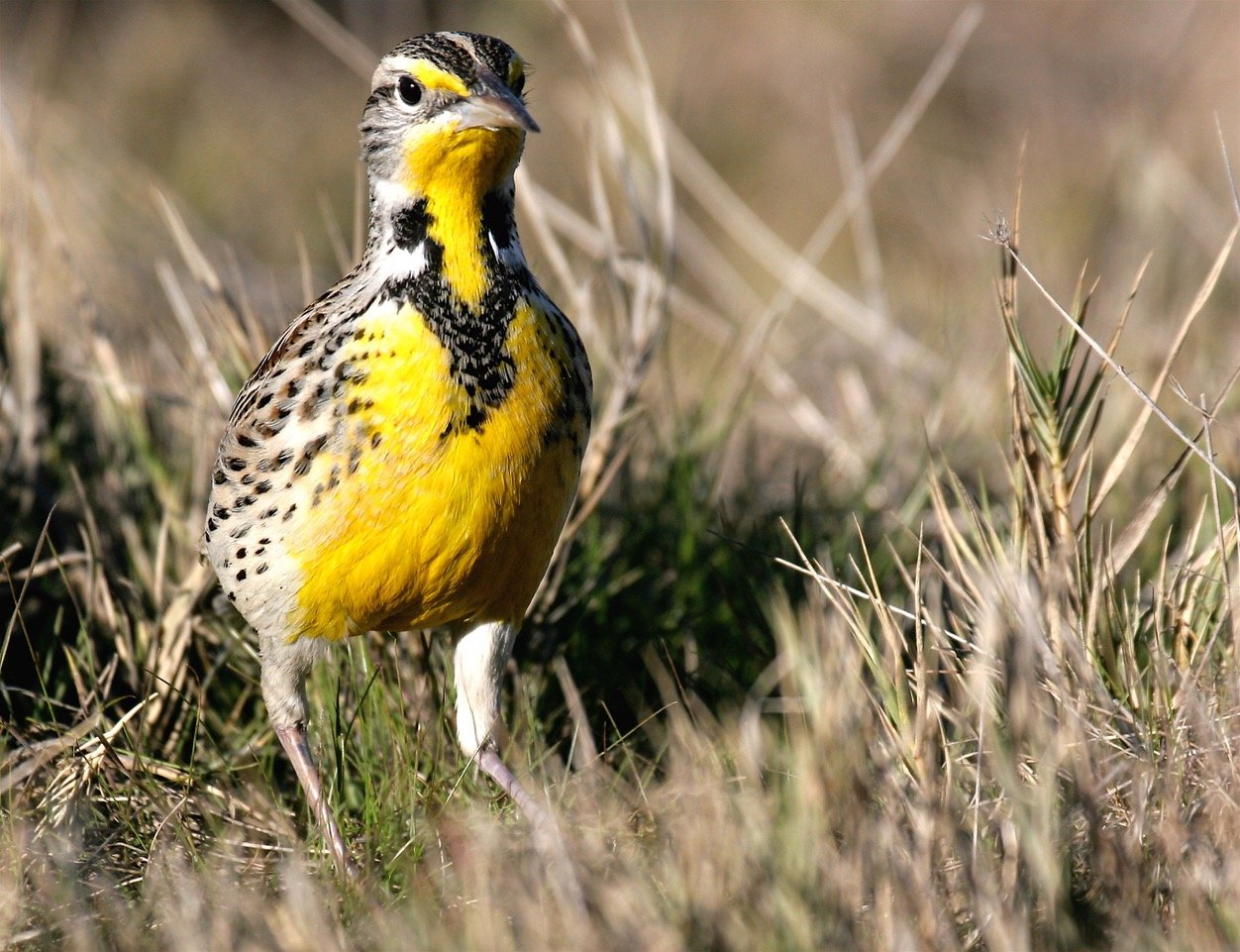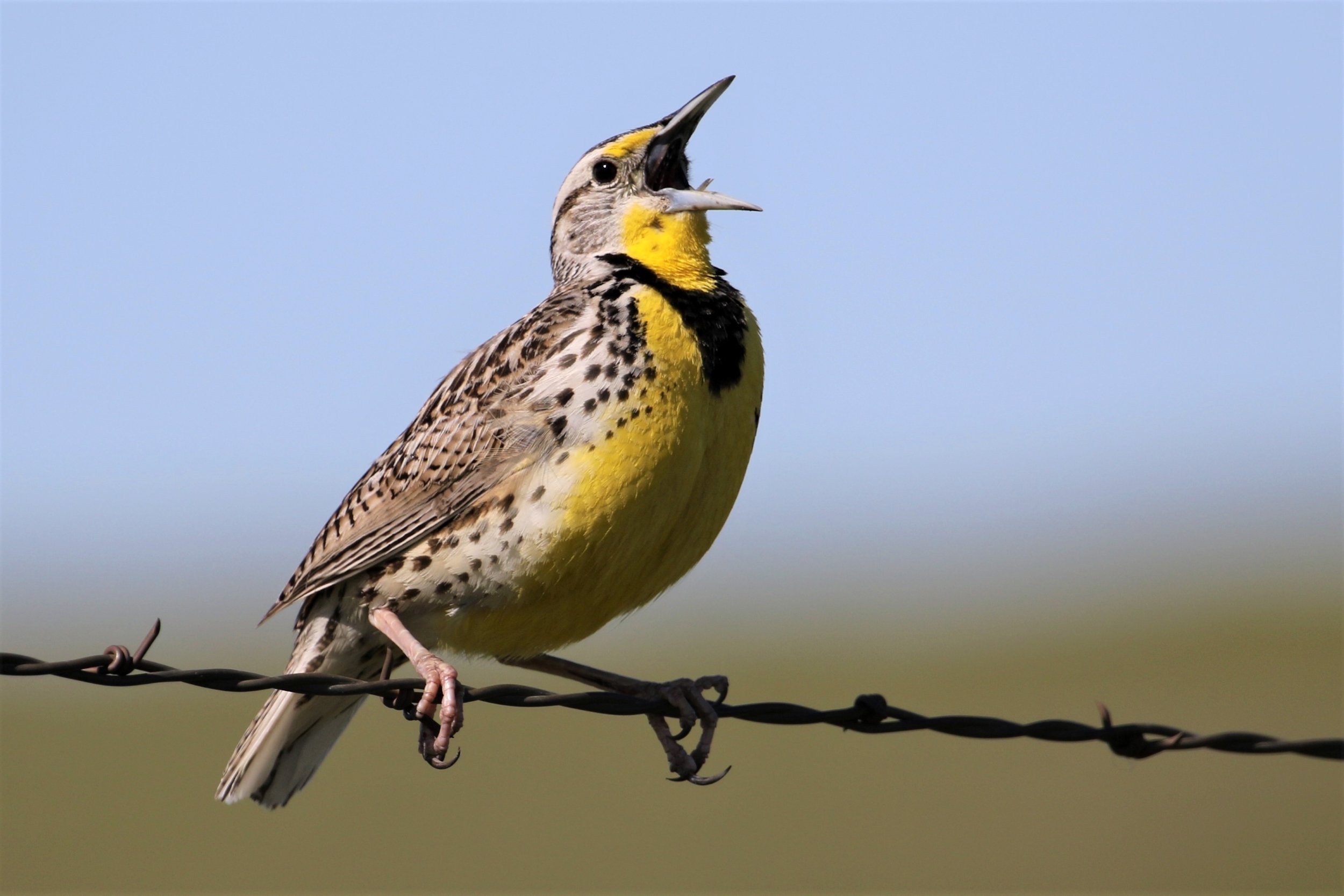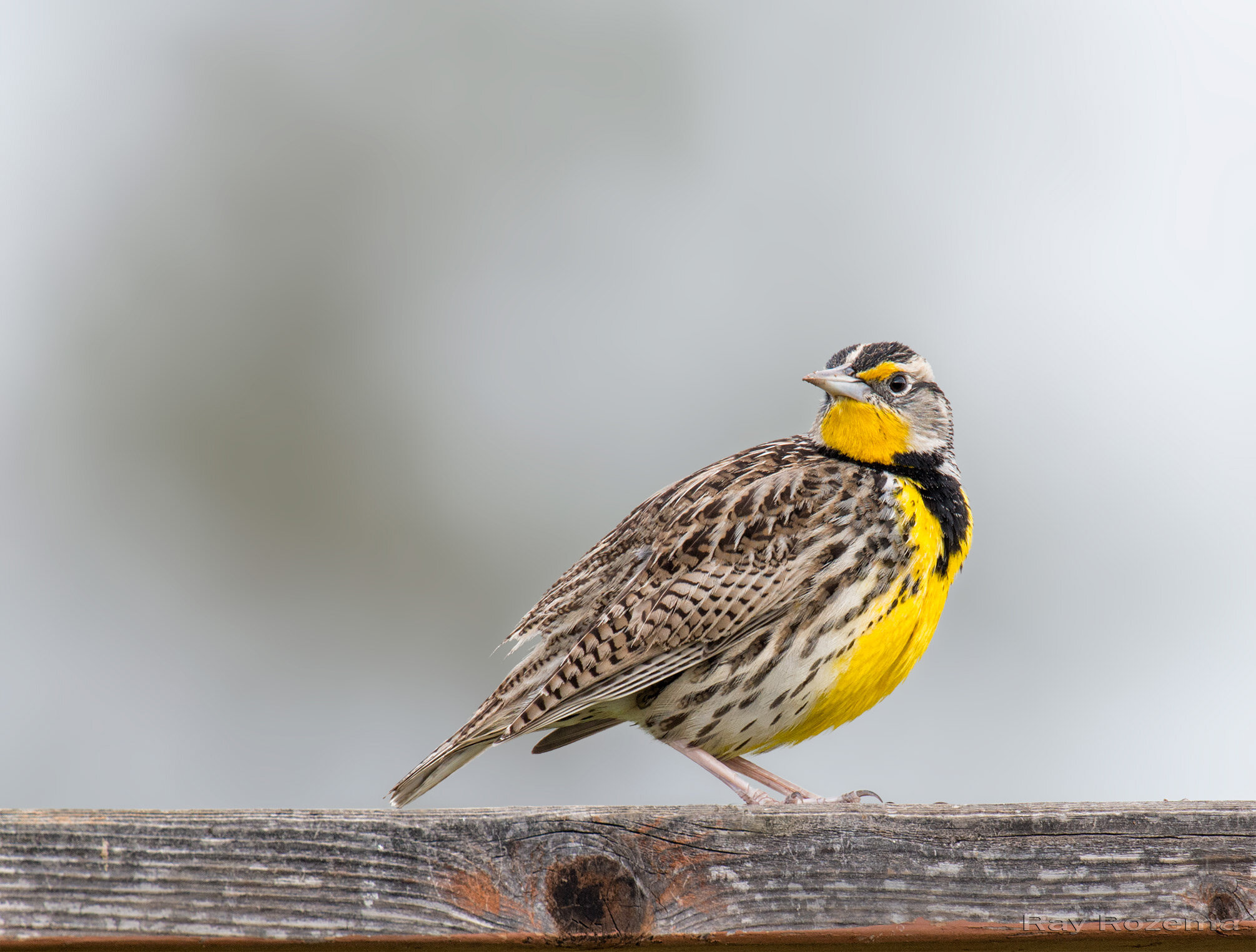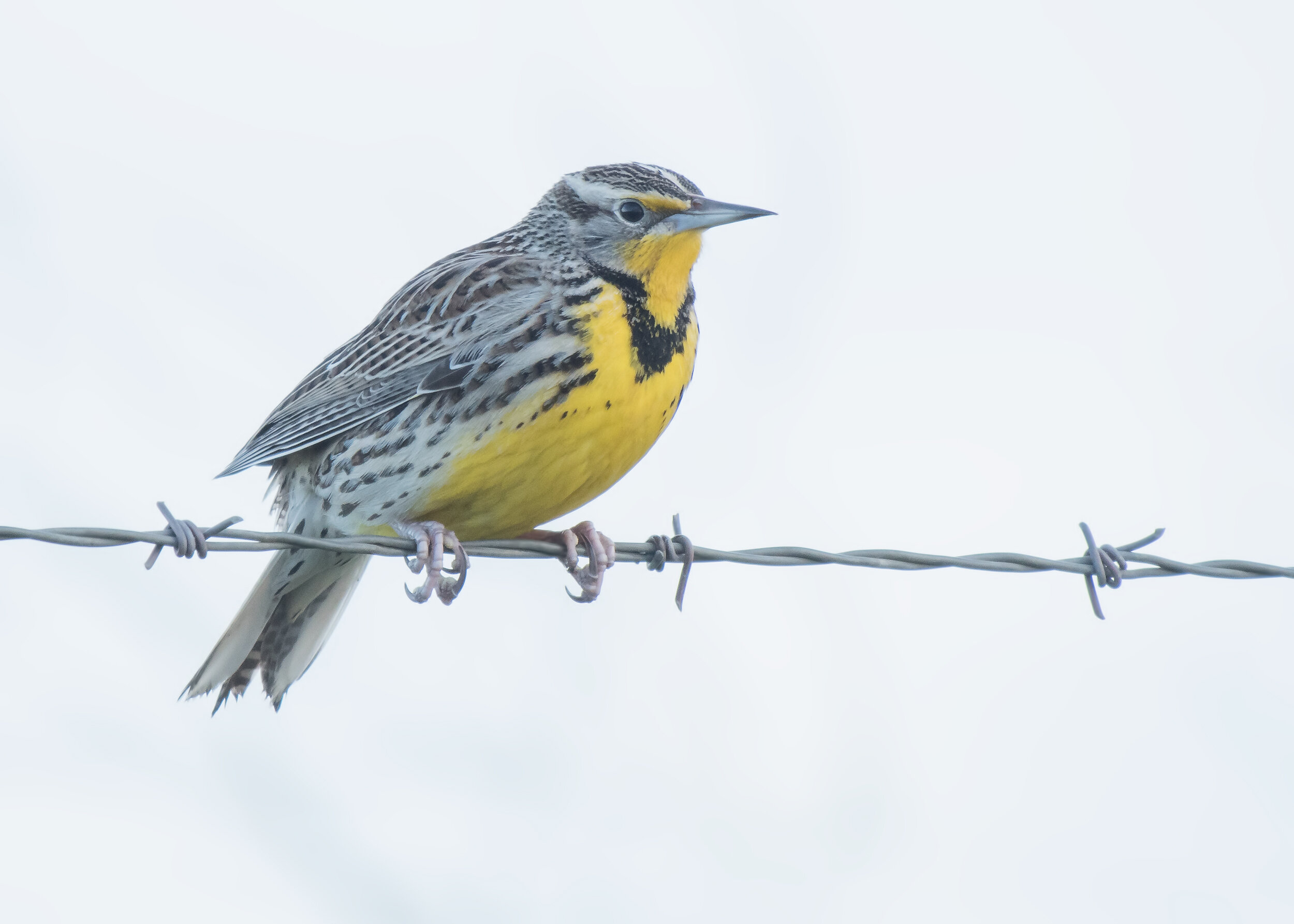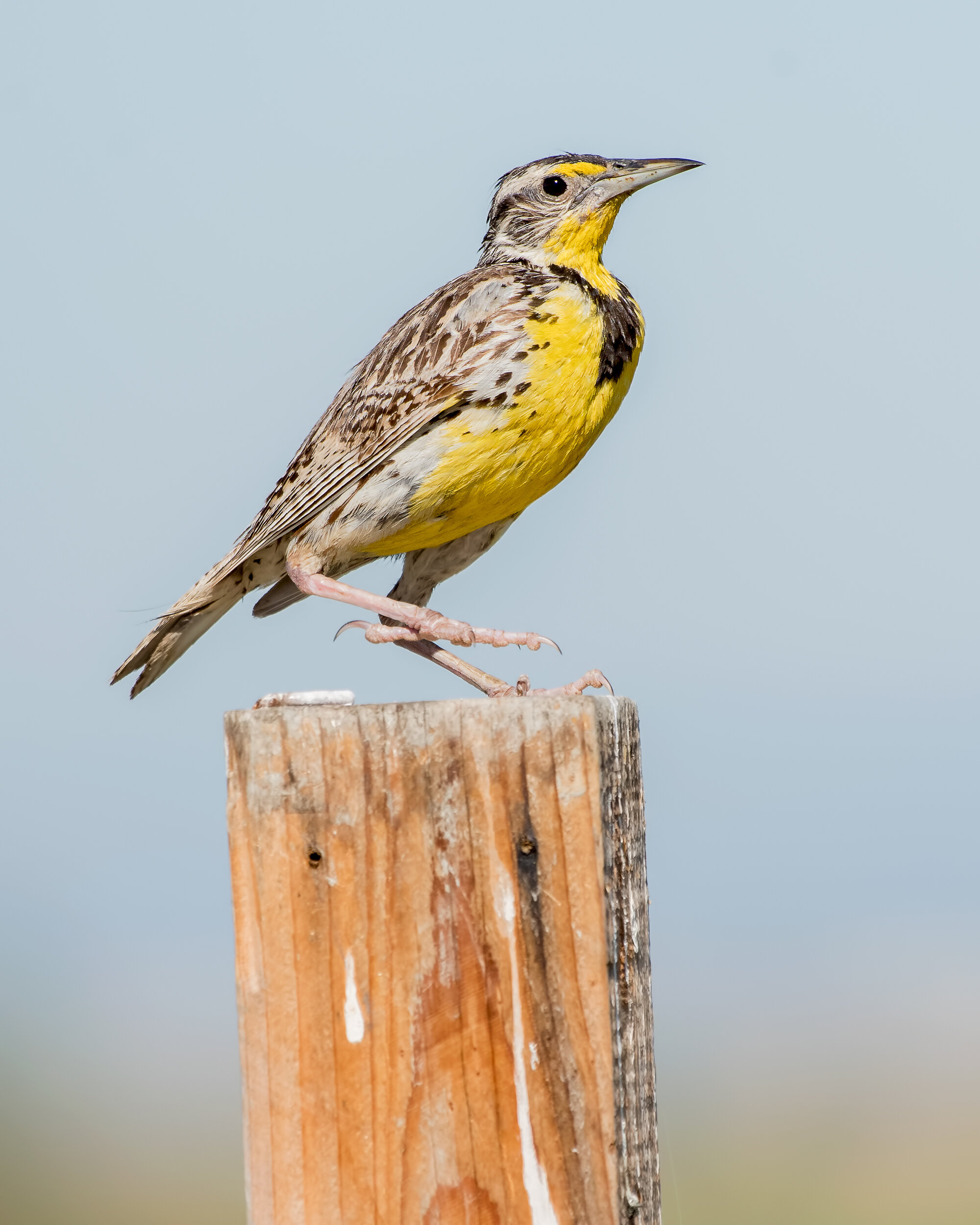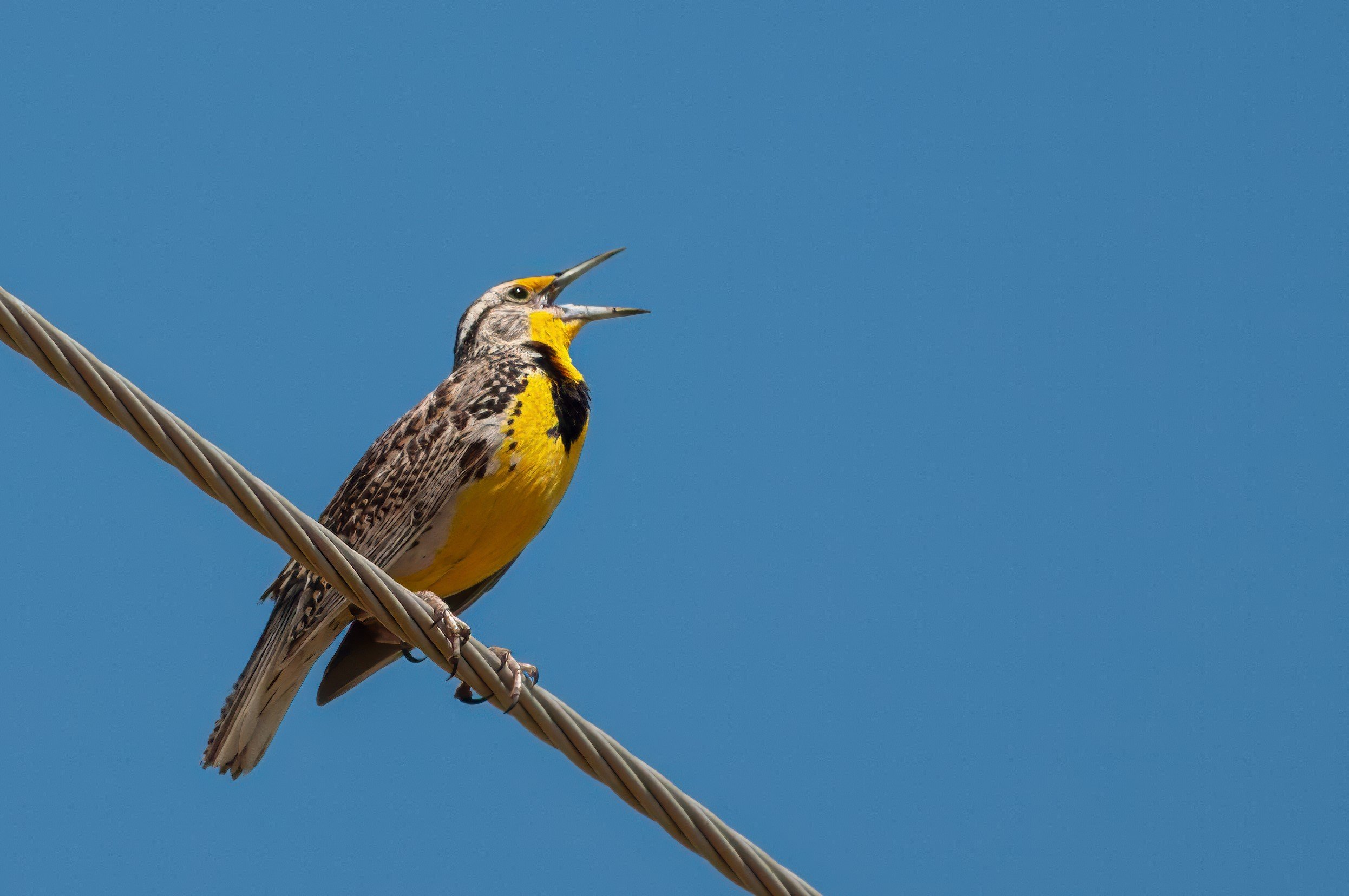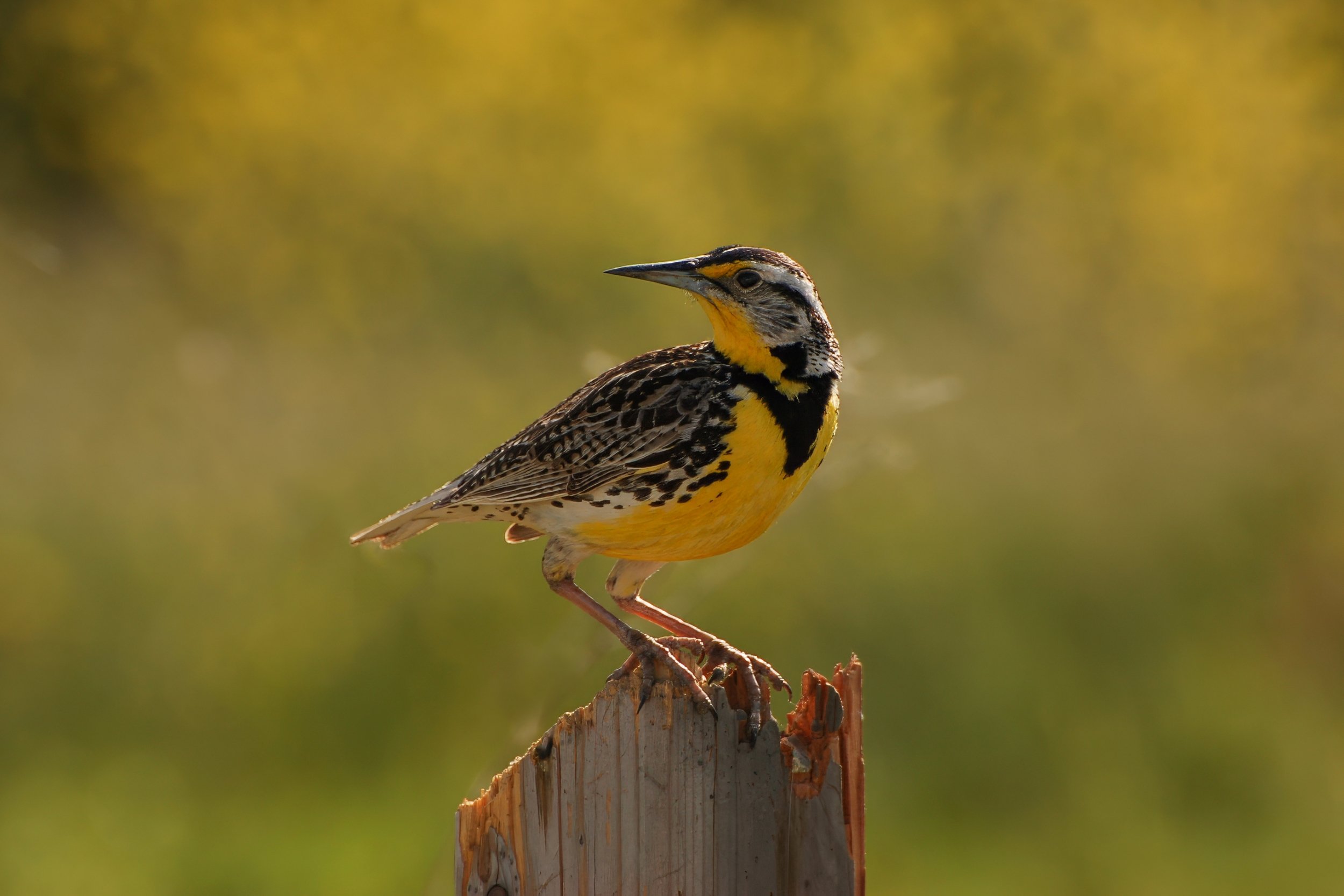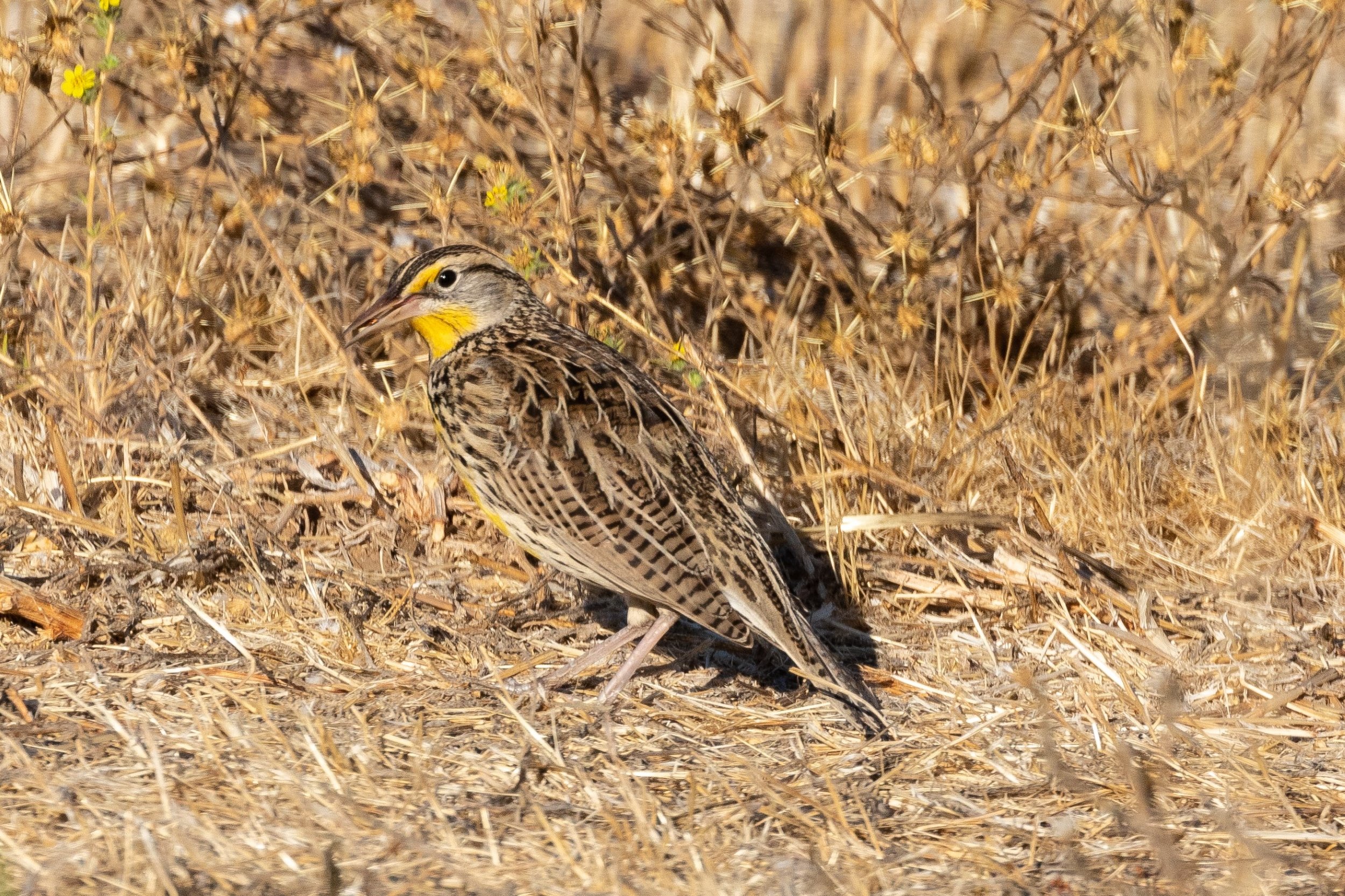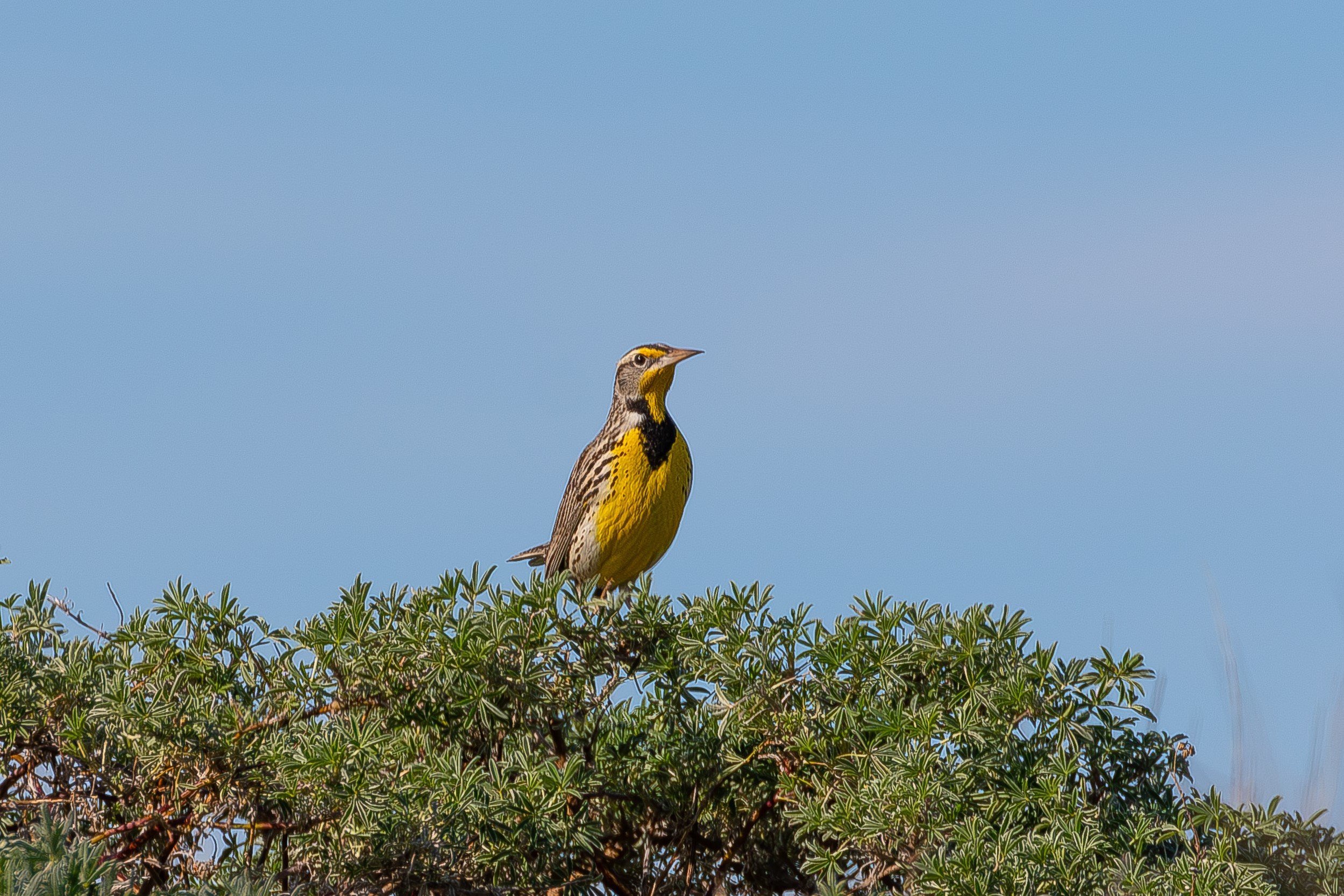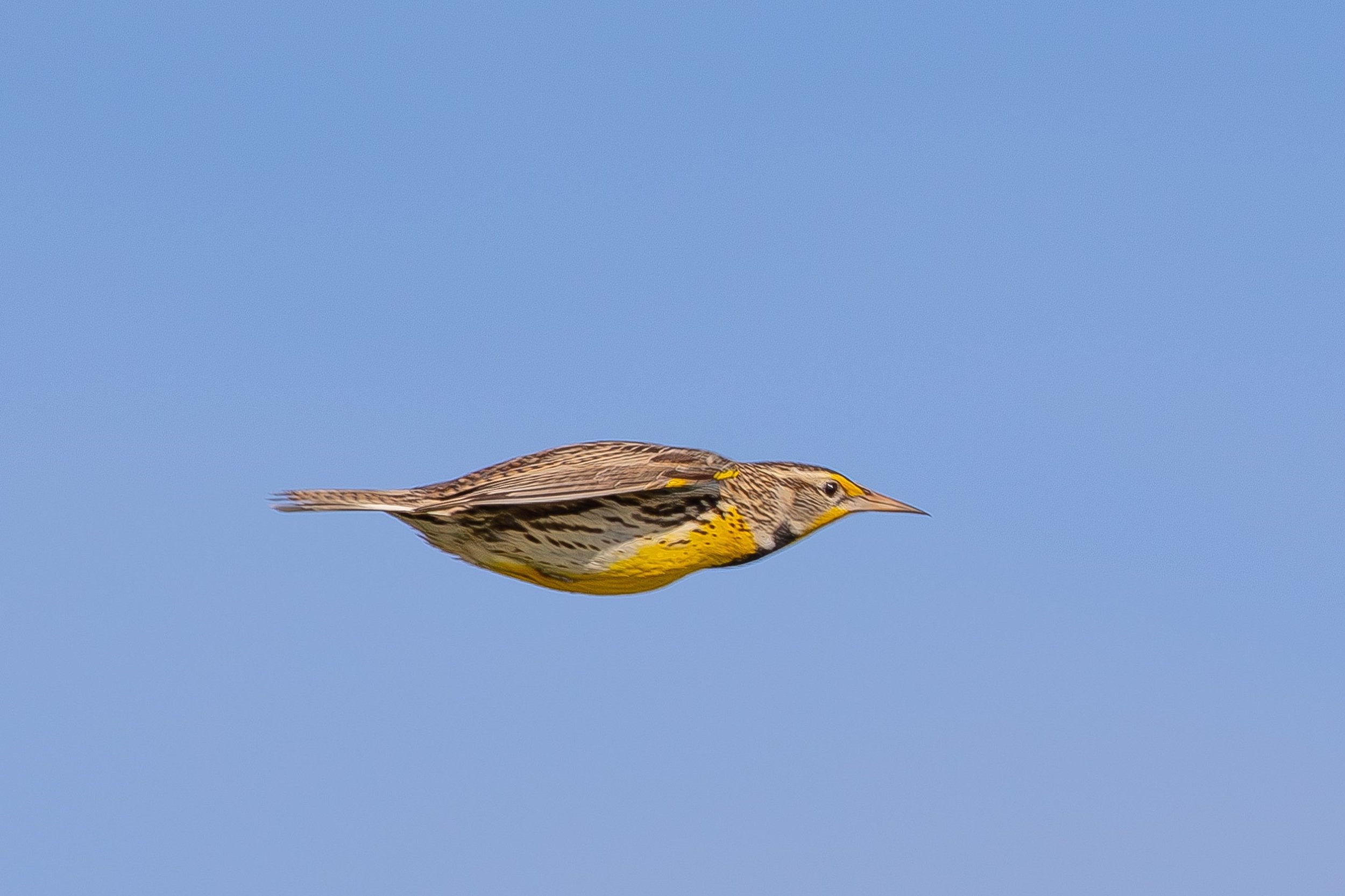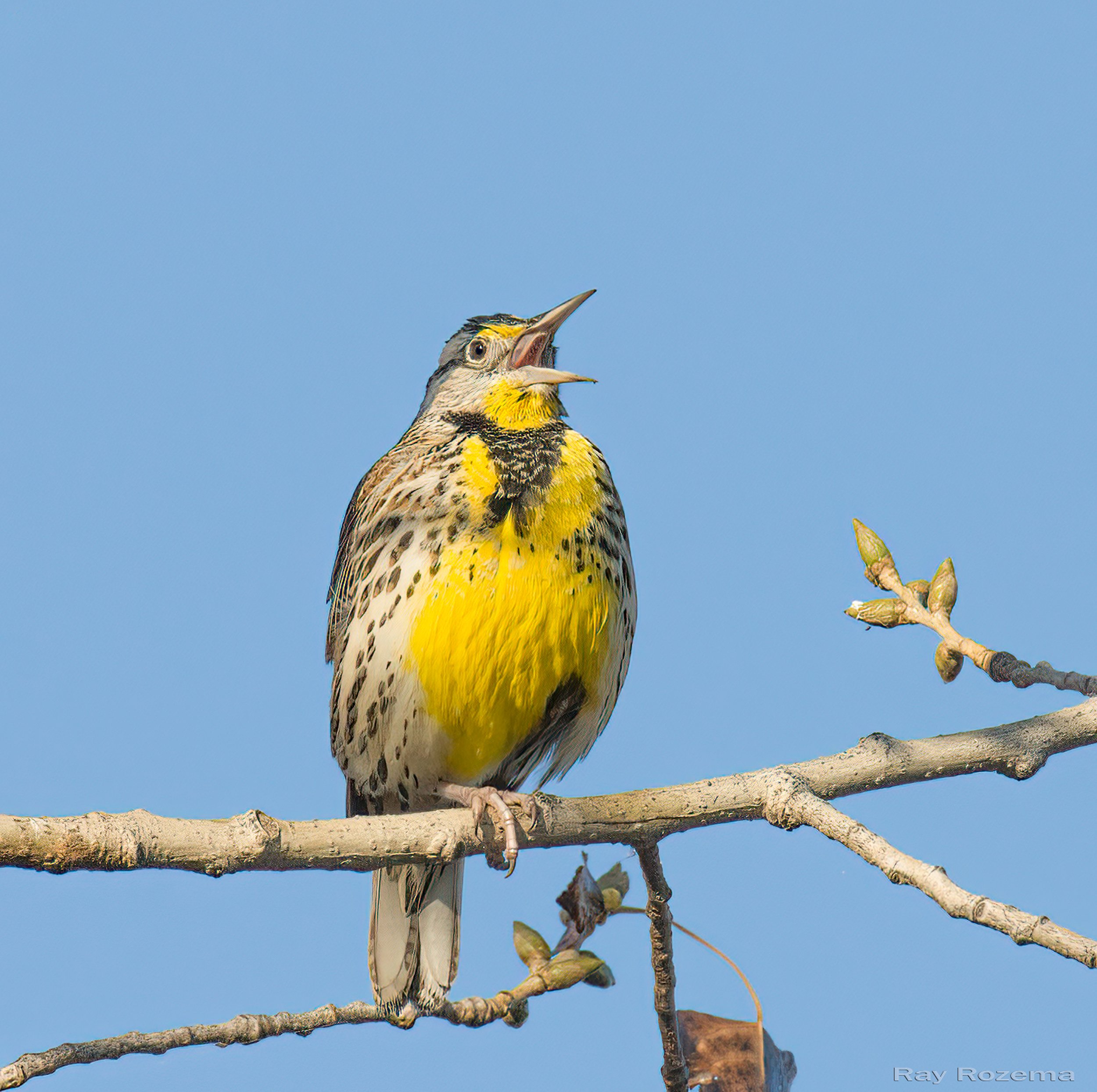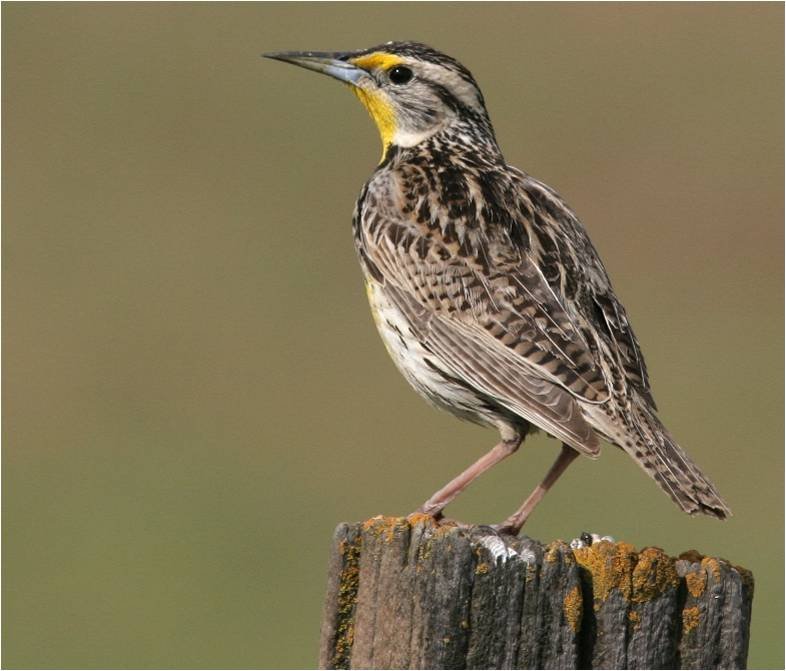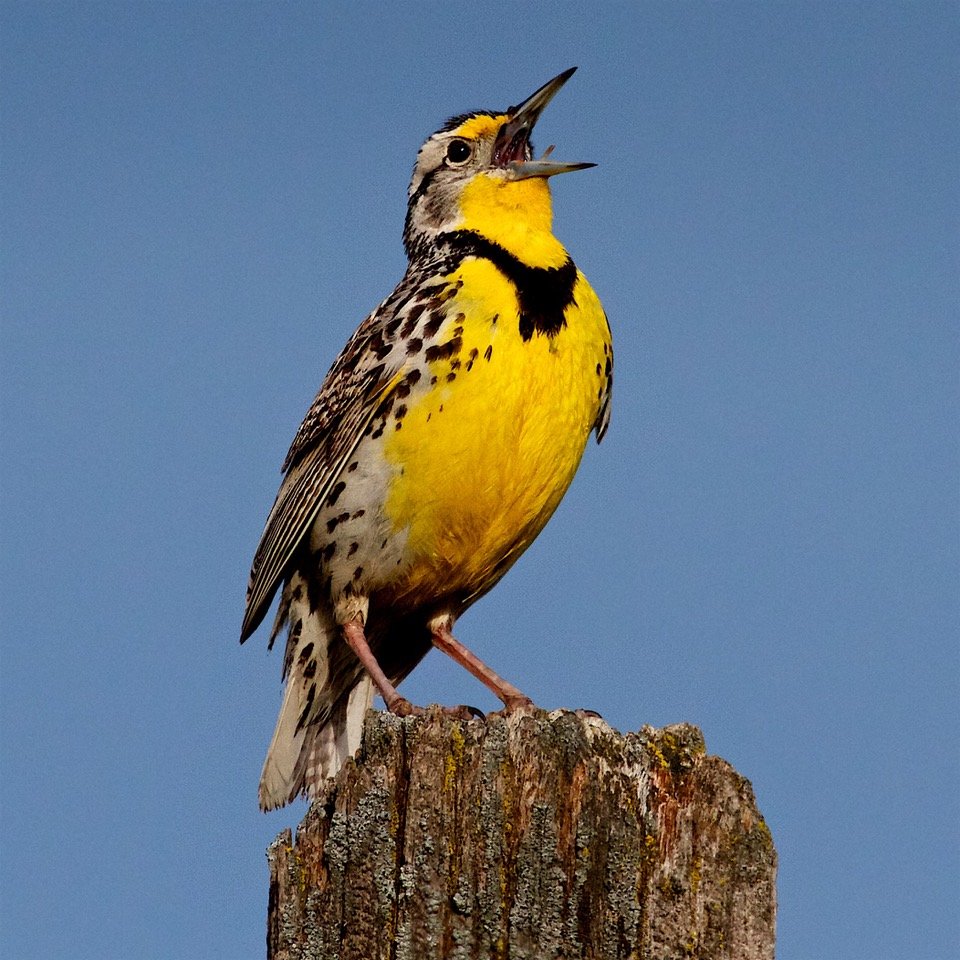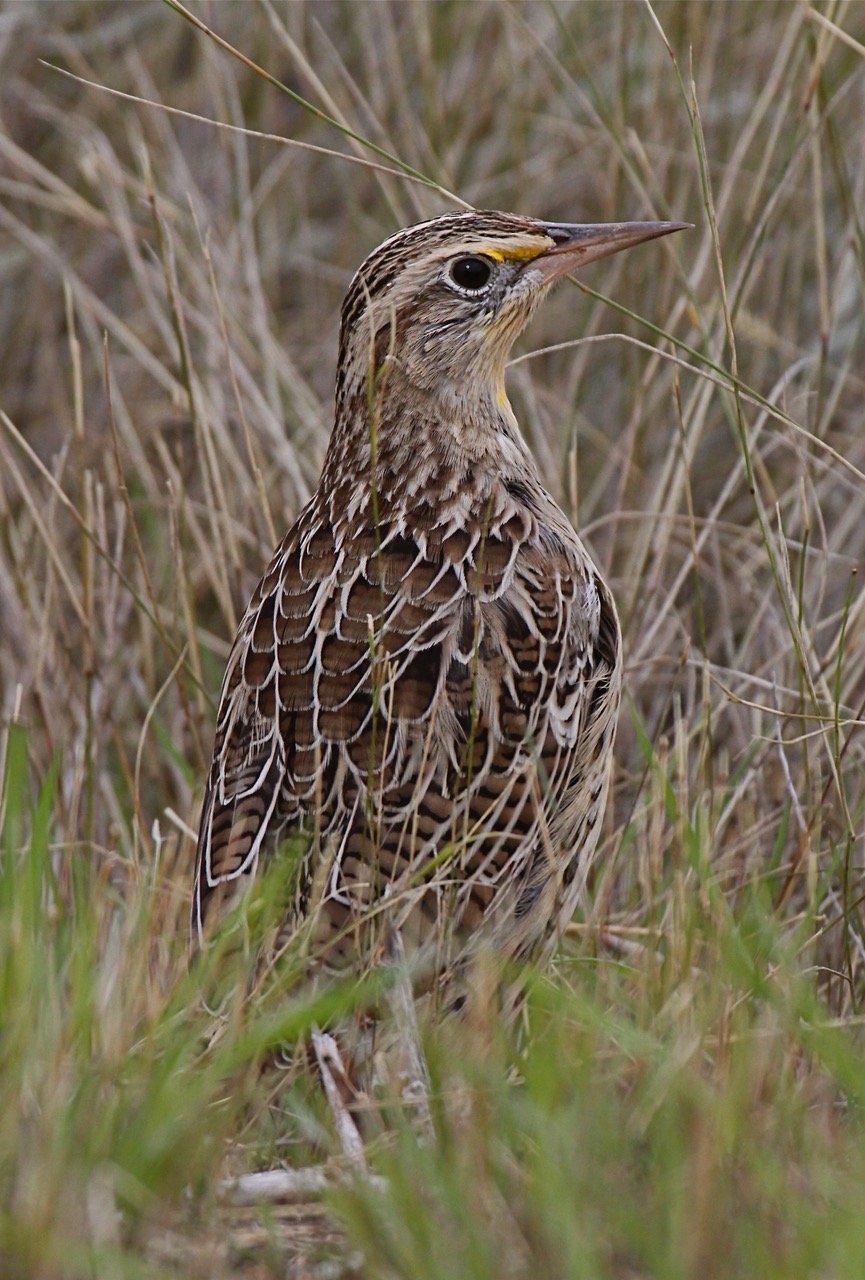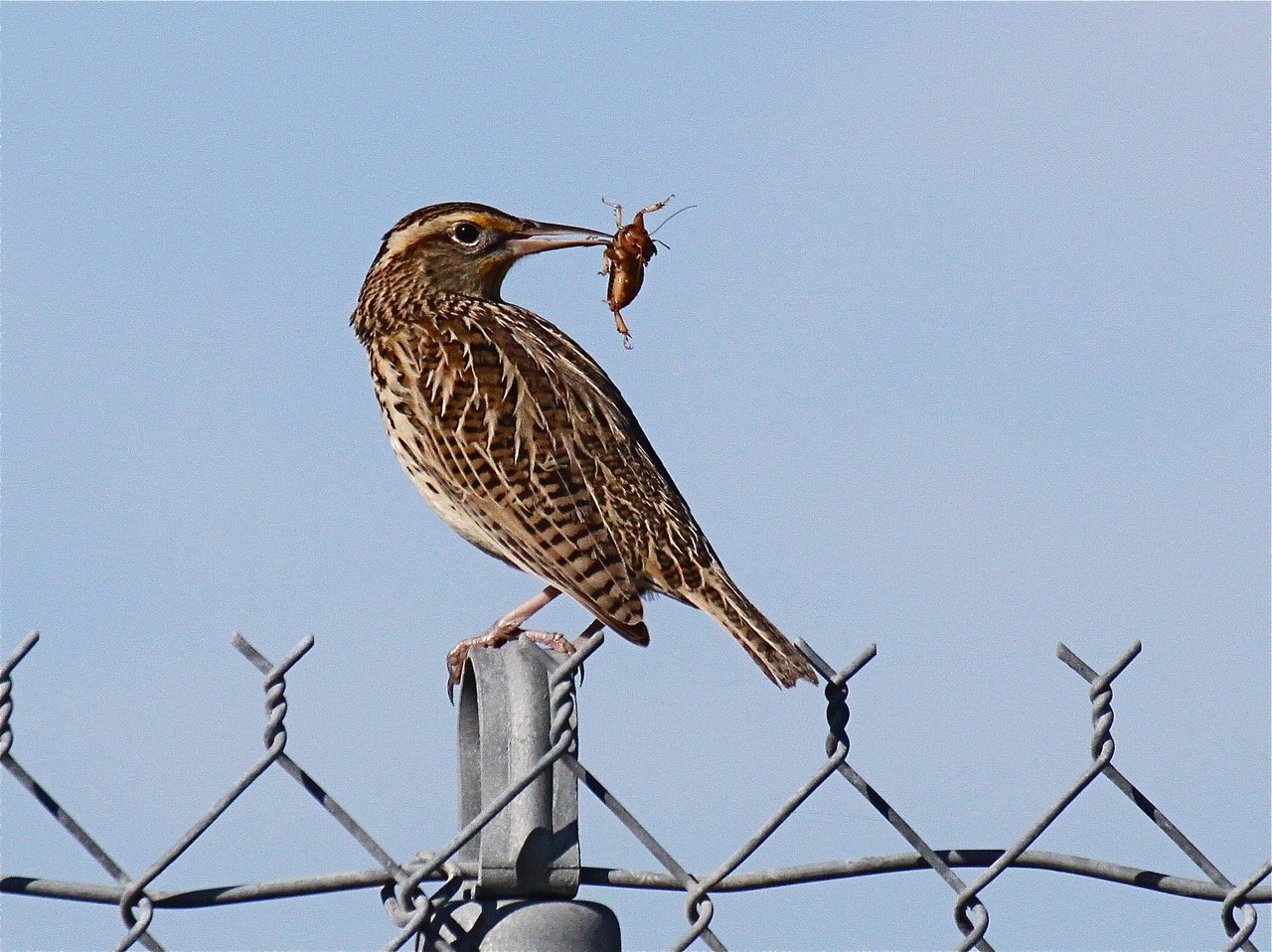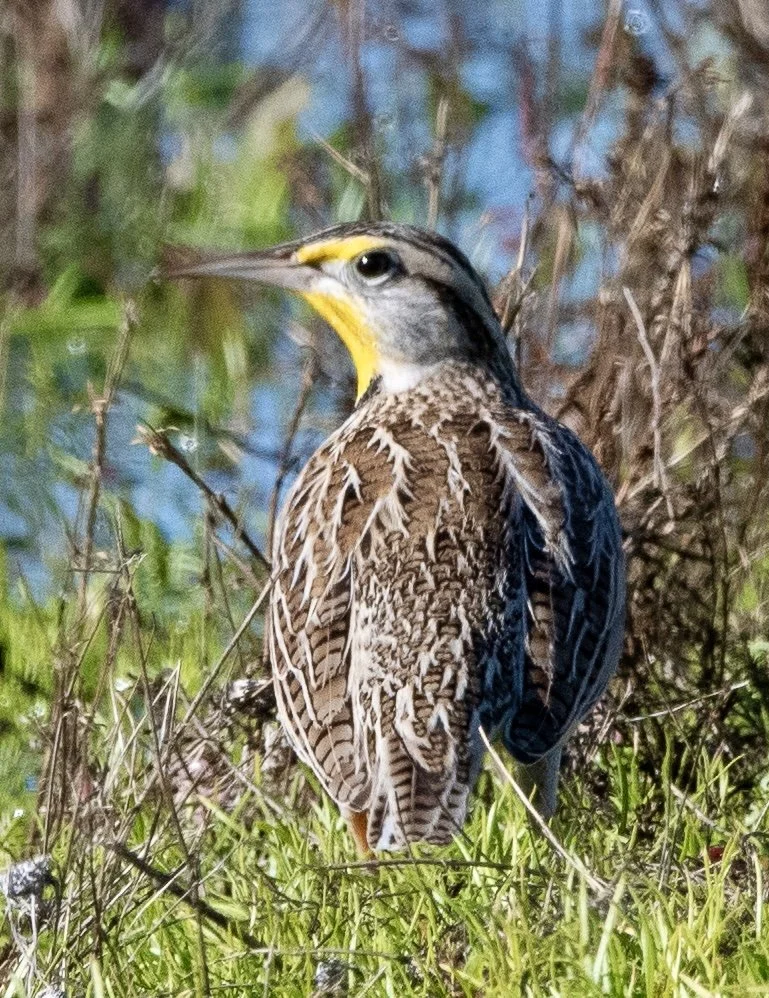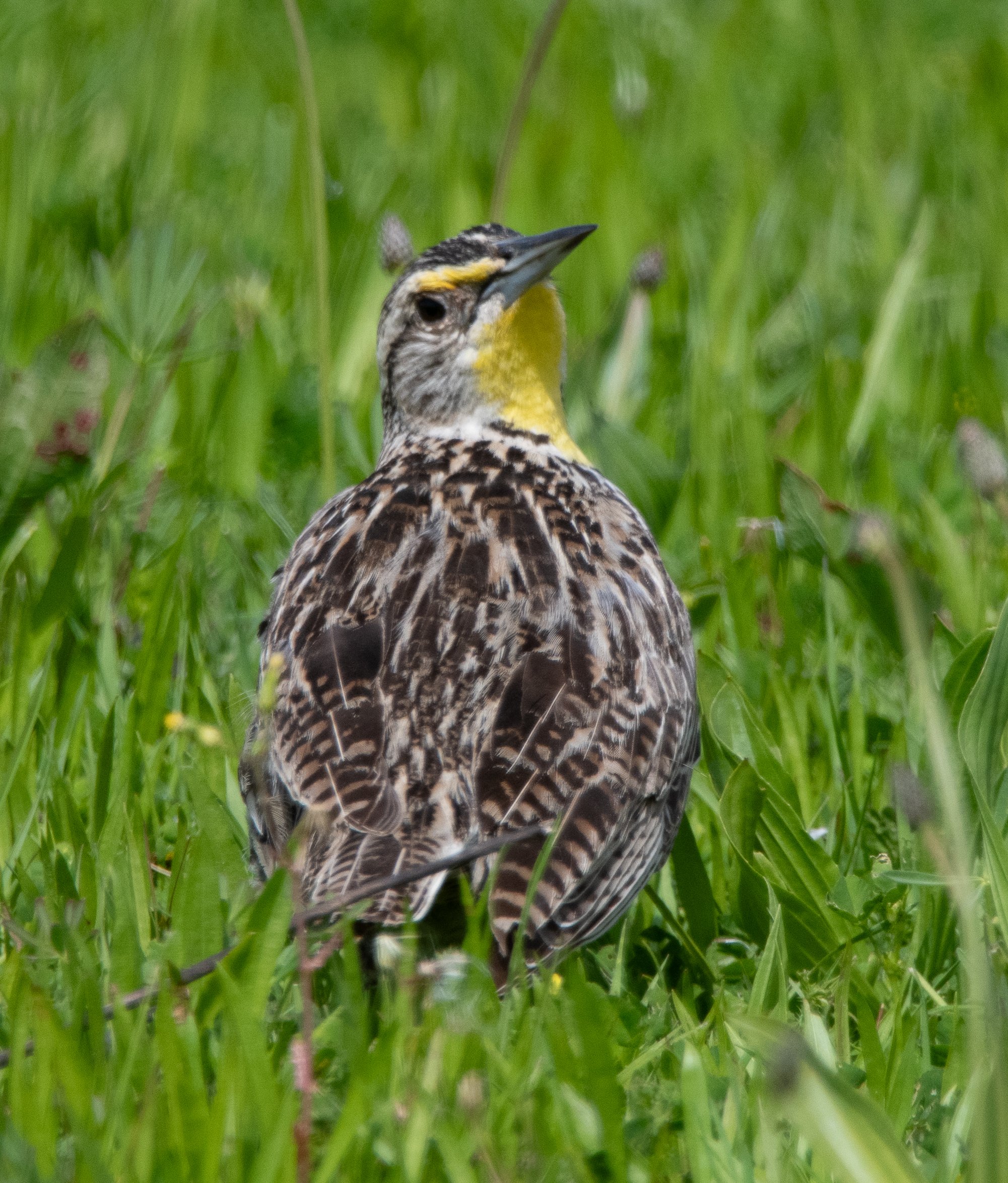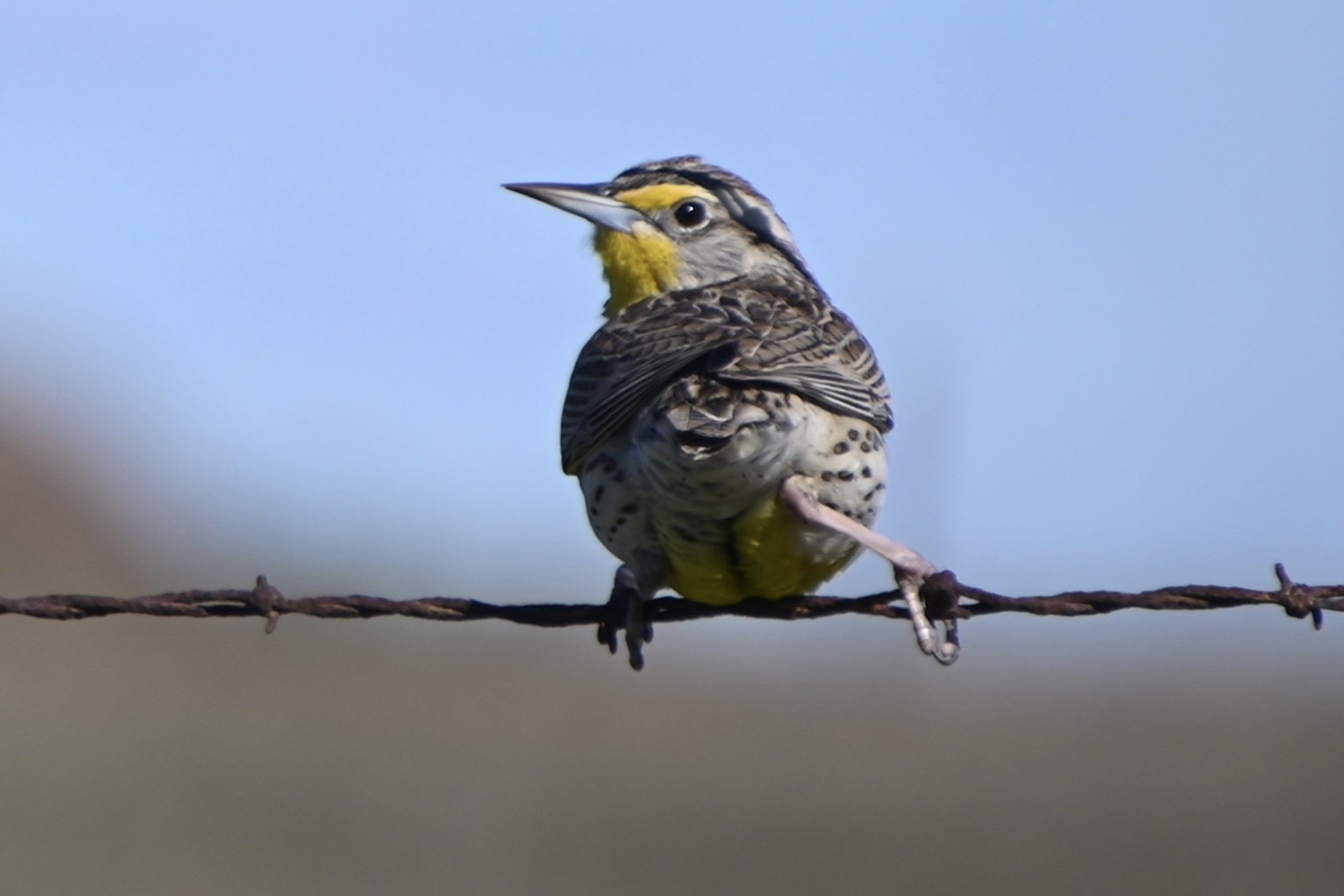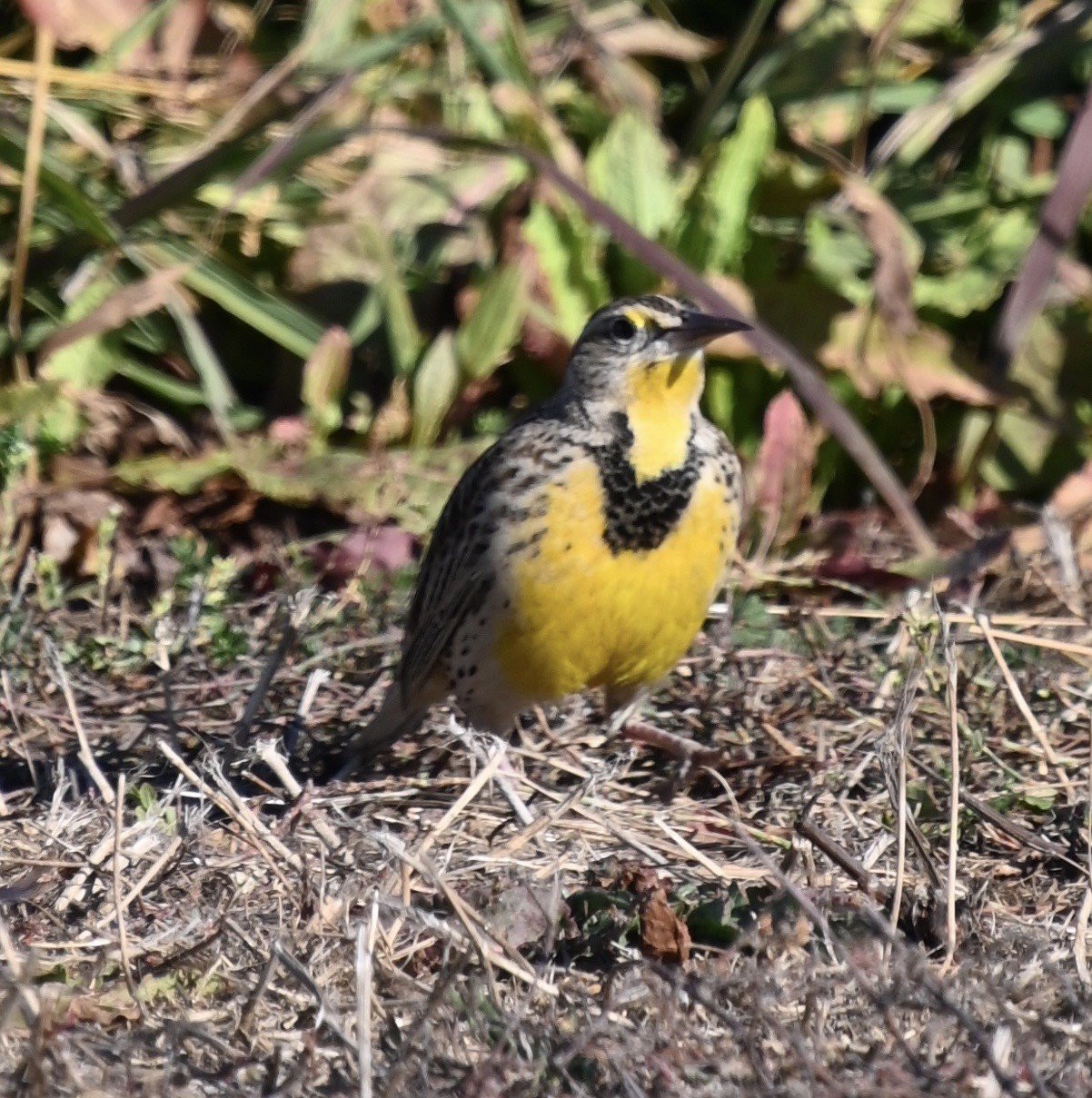Western Meadowlark, Image by Ray Rozema
This month, let’s learn about a song bird that lives year-round in California’s Central Valley, the Western Meadowlark (Sturnella neglecta). They are regularly found from the Pacific Ocean across to Michigan and up to Canada and south to northern Mexico. Western Meadowlarks are permanent residents in the western and south-central parts of their range. In contrast, the populations in the northern U.S. and Canada migrate south for the winter. Some winter as far away as northern Mexico.
The Western Meadowlark is a vividly colored species and has a glorious song. No wonder six states in the U.S. have designated the Western Meadowlark to be their state bird! Meadowlarks are not related to birds in the lark family. Instead, they are closely related to blackbirds and orioles. In some Midwest states, Western Meadowlarks are referred to as thunderchunks. This is because their vocalizations can be quite loud and they are “plump or chunky-shaped” birds. One will often hear Western Meadowlarks sing or call prior to seeing them. If you are lucky, you may see one perched on a fence or on the ground foraging (or searching for food). Unfortunately, one may only get a brief glimpse of these birds before they quickly vanish into vegetation. When taking off in flight, they start with brief, quail-like bursts; then they alternate between quick flaps and short, stiff glides.
Western Meadowlark in flight, Image by Larry Hickey
Take a minute to look at the second part of the Western Meadowlark’s scientific name “neglecta.” Western Meadowlarks were given this name because for a very long time they weren’t appreciated. They were thought to be individuals of another species called the Eastern Meadowlark. It wasn’t until the mid 1850’s that Western Meadowlarks were identified as a separate species. There is also a third and recently recognized (2022) meadowlark species, called the Chihuahuan Meadowlark. The ranges of these species overlap in specific areas but not in the Sacramento Valley. All three species are similar in shape, color, and pattern. However, they have different vocalizations and have some slight differences in their physical structure and/or plumage color.
What do Western Meadowlarks look like?
Western Meadowlark, adult, Image by Susie Nishio
Western Meadowlarks are around 9 inches in length. Female birds look similar to males but are slightly duller. In the spring and summer, Western Meadowlarks have bold yellow throats and chests with contrasting black V-shaped necklaces, tannish-brown and black plumage on their backs, tails, and wings, tan sides (or flanks) with dark streaks and spots, fairly short tails with white outer tail feathers (seen more often in flight on takeoff and landing), long, slender, slate or clay-colored bills, dark eyes, and long pink legs. Their heads are striped with light brown and black bands. Their light colored middle band changes to a bright yellow from the eye to the bill. Juvenile birds have paler bellies, less streaking of their flanks, pinkish bills, and the black chest Vs are absent.
After Western Meadowlarks molt and grow new feathers in the fall, the new feathers have a veil (or covering) over them which is tan or buff in color. During this time, Western Meadowlarks are less colorful. By early spring, this covering wears off and their breast plumage becomes a bright yellow which remains throughout the summer.
Where do Western Meadowlarks live and nest?
Many people do not see any value in non-developed dry fields. However, these dry grass fields are very desirable and critically necessary habitats for Western Meadowlarks. Western Meadowlarks actually avoid areas with dense trees and shrubs and require wide open spaces to nest and hunt for food. One can find them in open grasslands, meadows, prairies, agricultural fields, weedy fields, pasturelands, and along marshes. They are very sensitive to human disturbance and will abandon their nests if they feel at all threatened.
Western Meadowlark, Image by Ed Harper
Western Meadowlark females select nest sites on the ground and in a concealed location. Their nests are usually located in a slightly depressed spot (or slightly lower than the surface). The females independently construct cup-shaped nests out of grasses which takes 6-8 days to build. Frequently, the females also construct domed-shaped coverings over the nests to protect them from the sun and/or rain, etc. They make these “domes” by weaving grasses and shrub stems together and will anchor them to surrounding shrubs. Female Western Meadowlarks will also make tunnels going from the nest to the grasslands to have safe passage for foraging: both for herself and her future fledgelings. The female also solely incubate the young. The incubation period lasts for about two weeks. Males protect the nesting territory and will aggressively chase intruders away. Males also bring insects to the nest that the female will feed to the young. The young leave the nest (or fledge) in about 10-14 days after hatching and begin to learn how to forage. The parents continue to care for them for two additional weeks until they are able to skillfully fly.
What do Western Meadowlarks eat?
Western Meadowlark, Image by Ed harper
The diet of Western Meadowlarks changes with the seasons. They eat mainly grains in the winter and early spring, switch to insects during the nesting season, and consume weed seeds in the fall. In the early 1900’s, grain growers thought that Western Meadowlarks greatly harmed their crops. After research was done, it was discovered that these birds actually eat a great number of crop-damaging insects!
Western Meadowlarks’ diet includes grain, weed seeds, beetles, caterpillars, sow bugs, snails, spiders, ants, cutworms, grasshoppers, and crickets. They will occassionally eat eggs from other grassland birds and roadkill in extreme winters. In the winter, they will often feed in flocks.
The long, slender bill of the Western Meadowlark is perfect for grabbing insects. Western Meadowlarks also have very powerful muscles used to open and close their bills. Because they have these extra strong muscles, they are able to use a special foraging technique called gaping. First they penetrate the soil with their long bills and then force open their bills wide underground. This creates a hole in which Western Meadowlarks find buried insects and larvae.
What do Western Meadowlarks sound like?
Western Meadowlark, Image by Chris Conard
The beautiful and familiar song of a Western Meadowlark can perk up a listener’s ears and spirits. Western Meadowlarks’ vocalizations have been described as “whistles that speed up to a bubbling jumble”, “watery sounds”, “bell-like”, “warbles”, “a dull rattle in flight”, “a sharp chuck or chuk note”, and “flute-like gurgles going down the scale”. You can listen to the Western Meadowlark now and may wish to come up with your own description(s).
The sounds of Western Meadowlarks are from xeno-canto.org. More Western Meadowlark vocalizations can be found at: https://xeno-canto.org/species/Sturnella-neglecta.
This article was compiled by Jane Van Kessel.
Sources include Cornell’s All About Birds and Cornell’s Birds of the World, National Audubon Society Field Guide, 150 Frequently Seen Birds of California’s Great Valley, page 251, Sibley Birds West: Field Guide to Birds of Western North America, Second Edition, by David Allen Sibley, page 437, National Geographic Field Guide to the Birds of North America, 7th Edition, eBird.org, American Bird Conservancy, NatureWorks, Montana Natural History Center (The Western Meadowlark, Thunderchunk of the Montana Grasslands by Lauren Smith, April,2023), Oregon Wild, Splash: Water and Wildlife Education, Wikipedia




